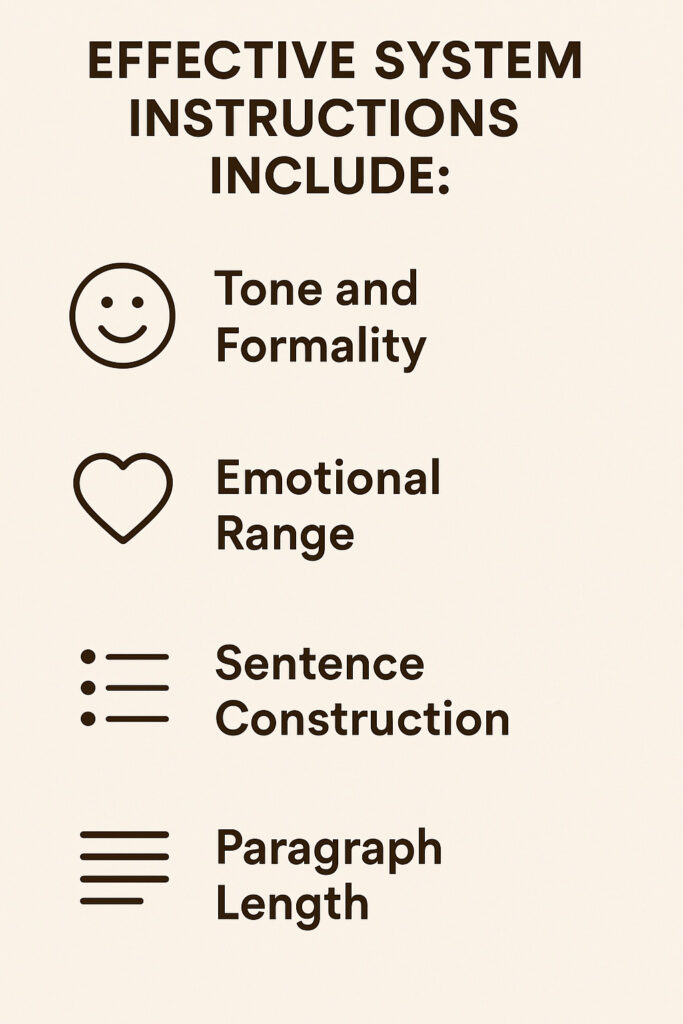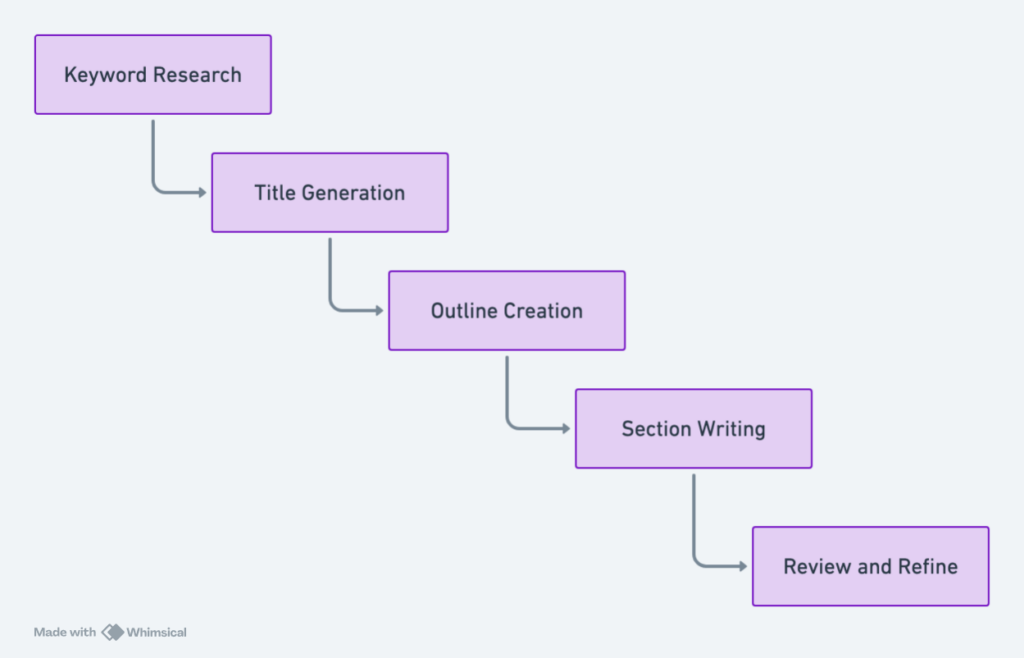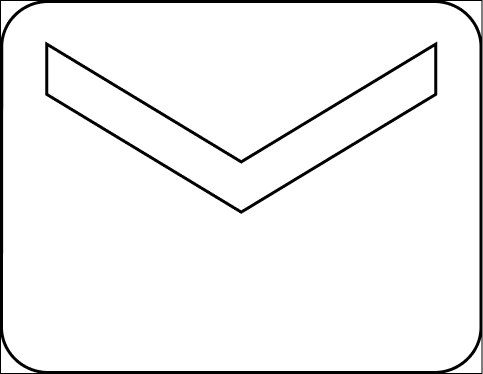Your cart is currently empty!

Breaking the AI Copywriting Code
Using Linguistic Frameworks and More
Reading Time: 12 minutesCoffee, Copy, and a Little Chaos
Bonnie sat at their usual corner table, a double espresso cooling beside her untouched. Her laptop was open, screen crowded with half-written copy drafts. She stared at it like it had personally offended her.
The bell above the café door jingled, and Kyle stepped in, sparkling slightly from a light spring rain. He spotted her immediately and smiled.
“Hey, Bonnie,” he said, setting his bag down and removing his jacket. “You look like you’re either about to rewrite the Declaration of Independence or delete the entire internet.”
Bonnie shot him a look, half amusement, half exasperation. “I’m about to delete something, that’s for sure.”
For those new to their rhythm, Bonnie, equal parts marketer, and firecracker runs a boutique digital marketing agency. Kyle’s a seasoned fractional CMO who lives for strategy and the long game. They are friends and colleagues who meet often, usually over coffee, to discuss what’s bugging them.
Kyle slid into the seat across from her. “Alright, what’s going on?”
She took a breath. “I’ve been trying to write a batch of social posts and some email copy. Thought I’d give the AI another shot. My hope is I’ll get a decent first draft that I can refine versus spending hours drafting—and then I still have to edit it all. But what I’m getting is just blah.”
Kyle leaned back, nodding slowly. “Yeah, that tracks. You’re probably running into the same thing I see with a lot of teams—they expect the AI to think like them, but they’re not actually teaching it how to do that.”
Bonnie gave him a look. “It’s a robot, not an intern. How exactly am I supposed to ‘teach’ it?”
He grinned. “Ah, my favorite question. Look, these large language models are powerful, but they’re also glorified pattern munchers. If you want them to generate a decent first draft, you need to train it. Think in terms of structure—linguistic frameworks, style systems, system instructions, knowledge files. You wouldn’t hand a junior copywriter a vague brief and expect gold. Same with the AI.”
Bonnie sipped her coffee, her frustration giving way to curiosity. “Alright, break it down. What should I be doing differently?”
Kyle leaned forward, and Bonnie smiled. She knew what was coming. Kyle had shifted into rant mode.
“First, understand how it structures language—dependency grammar versus constituency grammar. Then set clear system instructions—define your tone, sentence structure, emotional range, all the stuff. Build knowledge files that reflect your brand voice. Be specific about what to avoid. And, if you really want great results, work in stages: ideation, writing, editing, optimizing. It’s not magic. It’s about training and guiding the machine through your process. Do this and you’ll get a first draft you can work with.”
Bonnie raised an eyebrow. “So, while I didn’t understand everything you just said, I did realize something. I am talking to an intern, and I need to give it a mini marketing bootcamp.”
“Exactly,” Kyle said. “An AI is a highly intelligent intern that wants to please but knows nothing. So when people tell it to ‘write this,’ the AI will respond, it will produce something but great isn’t what you’ll get. If an intern walked into your office and you told them to write an ad, they’ll try, but do you think they’ll produce great work?”
“No, I wouldn’t expect this to work.”
“Yep. But if you train it well, it will start giving you real value. Otherwise, it’s just another time suck.”
She closed her laptop slowly and then looked at him. “Okay. You’re clearly more caffeinated than I am, and slightly smug about being right. Want to help me actually set this up?”
Kyle smiled. “Thought you’d never ask.”
And that’s where the real work, and the rest of this blog post, begins.
How to Train Your AI to Match Your Voice
Modern Large Language Models (LLMs) process and generate language using sophisticated linguistic frameworks. Understanding these frameworks will help you craft better prompts and system instructions, which will result in better AI copywriting.
How LLMs Process Language Structure
LLMs utilize many linguistic frameworks, but the two that matter for marketing are dependency grammar (focusing on relationships between individual words) and constituency grammar (focusing on phrases and hierarchical structure).
For example, if your brand uses short, punchy sentences in headlines but more complex structures in body copy, you can explicitly instruct the LLM to use dependency grammar for the headlines and constituency grammar for body copy.
But don’t take my word for it. Try it. Give ChatGPT some email copy and ask it for five subject lines. Then, start a new chat, give it the same email copy, and ask for five subject lines using the dependency grammar linguistic framework. When you compare A and B, you will see what I’m talking about.
Get AI Copywriting You Actually Like
Creating Clear Style Guidelines

Effective system instructions should include specific details about the following:
- Tone and formality level: Define exactly where on the spectrum your copy should fall (e.g., “semi-formal, blending professionalism with approachability”)
- Emotional range: Specify whether content should be motivational, instructive, cautionary, etc.
- Sentence construction patterns: Provide examples of preferred sentence structures. Writing samples are a good way to do this.
- Paragraph length preferences: State what you want. For example, tell the LLM you want shorter paragraphs with occasional longer ones supported by subheads
You can add more as your situation dictates, but these four are good place to start.
Ask the LLM to Analyze Copy Samples
To generate the system instructions, you can ask an LLM to analyze copy from successful ads, emails, or posts to determine the linguistic frameworks a brand uses and much more. This is a simple way to document your brand’s voice.
Here’s a prompt template you could use:
Analyze the following copy samples from our brand and identify:
- The primary linguistic frameworks being used (dependency grammar, constituency grammar, etc.)
- Typical sentence structures and patterns
- Common rhetorical devices
- Emotional tone patterns
- Vocabulary preferences and patterns
- Words or phrases that appear frequently
- Words or phrases that are notably absent
Copy samples:
[Insert 3-5 paragraphs of your best copy here]
Based on this analysis, create a system instruction that would help an LLM replicate this style.
The LLM identifies patterns that might not be obvious even to experienced writers. For example, it might notice that your brand tends to use active voice in headlines but passive voice when describing technical processes or that you typically use short sentences after longer, more complex ones for emphasis.
This analysis can form the foundation of your system instructions, allowing you to be more specific about how you want the LLM to replicate your brand’s style.
As an aside, do you see what I did here? Tip #8 in ChatGPT for Beginners is to use prompt templates. Templates are also handy when you delegate tasks to others on your team. Once you have something that works, create a template and have a VA use AI copywriting to generate first drafts for your consideration.
Words and Phrases to Avoid
One of the most effective ways to improve LLM output is to list words and phrases to avoid explicitly. For instance:
Avoid these transitional phrases: accordingly, additionally, arguably, certainly, consequently, hence, moreover, nevertheless, notably, in essence
Avoid these adjectives: comprehensive, dynamic, holistic, innovative, intricate, pivotal, robust, seamless, vibrant, vital
Avoid these verbs: delve, embark, excels, facilitate, maximize, unleash, unlock, utilize
Avoid these phrases: “In today’s digital landscape,” “It’s important to note,” “In conclusion,” “dive into,” “make the world better”
When you see something that’s cringe, add it to the list. Soon, you will have set boundaries that will prevent the LLM from falling into generic AI writing patterns that sound robotic and impersonal.
When you teach the AI how your copy works and what you want and don’t want, the AI knows how to:
- Create sentence structures that match your brand’s style
- Maintain appropriate sentence length and complexity
- Balance formal and informal elements in your copy
- Generate natural-sounding transitions between ideas
It will generate a first draft you can work with.
How Knowledge Files Transform AI Copywriting
Knowledge files serve as a crucial resource for training LLMs to understand your specific brand voice. They provide context that goes beyond basic instructions. Adding knowledge files gives the AI the resources it needs to give you nuanced responses.
Some Knowledge File Examples

- Brand Voice Examples: Include multiple paragraphs that exemplify your preferred style. These serve as patterns the LLM can learn from.
- Audience Information: Use your best customer avatar and buyer’s journey map as knowledge files. The output is improved when the LLM knows who it’s talking to.
- Industry Context: Provide expert background on your industry. This could be scientific papers, YT transcripts, blog posts you’ve published, or a thesaurus of common terminology and concepts. This helps the LLM understand your business.
- Competitive Differentiation: Explain what makes your messaging unique compared to competitors. For example, what common themes do you use when talking about your business? This helps the LLM sound like you and not a generic industry cliché.
How to Structure Knowledge Files
Knowledge files are background. They should be organized in a way that makes them easy for an LLM to process:
- Use clear section headers
- Include explicit examples with explanations of why they work
- Provide before/after examples to show the transformation from generic to brand-specific copy
- Include your brand’s style guide or relevant sections
I find that asking for help with this is useful. I will craft a knowledge file and then ask ChatGPT to assess it and recommend changes that will make it a more effective knowledge file. You will want to check your ego at the door, as its response can be brutal.
Using AI Platform Tools for Consistency
The following platform-specific features will enhance your marketing copy.
Using Project Spaces in Claude
Claude’s Projects feature provides a structured environment that significantly improves marketing copy generation:
- Persistent System Instructions: Set up detailed system instructions once that apply to all conversations within the project
- Knowledge File Libraries: Upload and manage your brand style guides, example content, and competitor analyses in one organized space
- Workflow Separation: Create different projects for each client, different marketing campaigns or content types (email sequences, social posts, blog content)
- Team Collaboration: Share projects with team members to ensure everyone works from the same brand guidelines
I have a Claude project called Make It Sound Like James Wrote It. I use this to rewrite AI output, and it does a pretty good job. Above, I mentioned giving the LLM before-and-after examples. I do this here. Each time I use the Make It Sound Like James Wrote It Project, I add the original copy and the copy after editing it to the example knowledge file. As I keep doing this, the AI gets smarter, and I edit less.
By compartmentalizing your copywriting needs into dedicated projects, you maintain consistency across all AI-generated content while avoiding the need to restate your requirements with each new prompt.
Building Custom GPTs
For teams using OpenAI’s GPT platform, custom GPTs are similar to Claude Projects and offer many of the same advantages:
- Specialized Instructions: Create GPTs solely dedicated to your brand’s tone and style
- Built-in Knowledge: Embed your style guides and brand examples directly into the GPT
- Functional Focus: Design different GPTs for different marketing functions (SEO content writer, social media caption generator, email sequence builder)
- Simplified User Experience: Allow team members to interact with a pre-configured AI that already understands your brand requirements
Marketing Sage Advantage is a custom GPT we built and trained to analyze guided customer interviews and generate an ideal customer avatar and buyer’s journey map. We used the OpenAI platform because it’s better at analysis, which is the key task here.
Creating a Multi-Stage Content Generation Pipeline

For optimal results, consider implementing a multi-stage approach:
- Ideation GPT/Project: Focuses on generating creative concepts and outlines
- Writing GPT/Project: Transforms outlines into on-brand copy
- Editing GPT/Project: Refines content to ensure compliance with style guidelines
- SEO GPT/Project: Optimizes content for search while maintaining brand voice
This approach prevents any single AI conversation from having to juggle too many requirements, resulting in more focused, higher-quality output at each stage.
There’s a variation of this idea in the next section.
Breaking Complex Writing Tasks into Sections
One of the most effective strategies for getting high-quality marketing copy from LLMs is to break complex writing projects into smaller, sequential steps rather than asking for the entire piece at once.
The Step-by-Step Approach

Instead of simply prompting “Write a blog post about digital marketing trends,” use a workflow.
- Keyword Research: “Based on the primary keyword ‘digital marketing trends,’ generate 10 long-tail keywords with informational intent that would make good subtopics.”
- Title Generation: “Using these keywords, create 5 potential titles for a blog post that would appeal to high six- to low seven-figure business owners who are using digital marketing to accelerate growth.”
- Outline Creation: “Create a detailed outline for a 1500-word blog post using the title [selected title]. Include an introduction, 4-5 main sections with 2-3 subsections each, and a conclusion.”
- Section-by-Section Writing: “Write the introduction section for this blog post following our semi-formal, approachable style guidelines.” As each section is completed, give the LLM feedback and any adjustments you’d like to see.
- Review and Refinement: “Review this document and recommend changes to make it more useful to our target reader.”
This won’t replace the need to edit, adjust, and add to the content, but you’ll be working from a solid draft that only took a few minutes to create. And I’d recommend you always take the Review step. It’s surprising what the AI will notice or bring up.
For example, ask it to review a social media caption or email copy from your ideal customer’s point of view. I asked ChatGPT to review this post from the POV of our ideal client and it suggested several changes that I incorporated.
Benefits of the Incremental Approach
This methodology offers several advantages:
- Focused Quality: The LLM can concentrate entirely on producing the best possible output for each smaller task
- Opportunity for Direction: You can course-correct between steps if the content isn’t aligning with your vision
- Reduced Hallucinations: Breaking content into smaller chunks means you can review the output, spot anything that’s amiss, and request an adjustment
- Better Structure: Content naturally becomes more logically organized when created incrementally
- Enhanced Creativity: You can dedicate more of your processing power to creative elements when you aren’t burning hours writing drafts
Implementing This Approach in Projects and Custom GPTs
To make this process even more efficient:
- Create Template Prompts: Store your step-by-step process as template prompts within your Claude Projects or custom GPTs
- Build Specialized Tools: Consider creating different custom GPTs for different stages (keyword research GPT, outlining GPT, etc.)
- Document Successful Workflows: When you find a sequence that works well for a particular content type, save it for future use
Example Workflow Implementation
Here’s how this might look in a Claude Project:
PROJECT: Monthly Blog Content
SYSTEM INSTRUCTIONS: [Your system instructions]
KNOWLEDGE FILES: [Brand style guide, best customer avatar, buyers journey map, expert information, example content]
PROMPT TEMPLATES:
– Keyword Research: [Template text]
– Title Generation: [Template text]
– Outline Creation: [Template text]
– Section Writing: [Template text]
– Content Review: [Template text]
By combining the structured environment of Projects or custom GPTs with this incremental approach to content creation, you can achieve remarkably consistent, high-quality marketing copy aligned with who your customers are and your brand voice.
Additional Considerations for Effective LLM Marketing Copy
Understanding Output Variability
Even with identical prompts, LLMs can produce different outputs each time. You should:
- Use temperature settings strategically (lower for consistent branded copy, higher for creative ideation)
- Implement a review process for all AI-generated content
- Create evaluation criteria based on your brand guidelines
Combining Human and AI Workflows
The most effective approach to AI copywriting is rarely “AI only” but rather a collaborative process:
- Use LLMs for ideas, structure, and first drafts
- Have human writers refine and add authentic brand personality
- Create feedback loops (before and after examples) where human edits inform the AI’s future efforts
Ethical Considerations and Disclosure
As AI-generated content becomes more common, transparency matters:
- Consider when and how to disclose AI assistance in content creation
- Ensure all claims and statistics are verified by human experts
- Maintain authenticity in customer testimonials and case studies
Tracking Performance Metrics
Measurement is the third leg (third rail?) of effective marketing plans.
- A/B test AI-originated versus human-written copy
- Track engagement metrics specific to different content types
- Use performance data to refine your LLM instructions
Staying Current with LLM Capabilities
The field is evolving rapidly:
- Different LLM models have different strengths. I prefer ChatGPT for analysis-oriented tasks and Claude for writing. I use Perplexity for research, although ChatGPT’s Deep Research platform has shown interesting results.
- New features and capabilities are regularly added to popular LLMs. We talk about the new ChatGPT image tool in 16 Advanced ChatGPT Tips
Returning to the Coffeeshop – AI Copywriting Gets a Second Chance
The rain had stopped, leaving behind the soft scent of spring and a sheen on the sidewalk that shimmered under the afternoon sun. Inside the café, Bonnie and Kyle were back at their corner table, surrounded by the controlled chaos of notebooks, sticky notes, and half-drunk coffee cups.
Bonnie leaned back, stretching. “Okay, I’ll admit it. That was one of the better working sessions we’ve had. I don’t hate the AI’s output anymore.”
Kyle chuckled. “That’s high praise coming from you.”
“No, seriously,” she said, tapping her trackpad. “Once I got the system instructions and style guide locked in, and loaded those copy samples? Huge difference. It’s still not perfect, but now the AI copywriting sounds like us—it sounds like something I’d actually write.”
Kyle nodded, satisfied. “It’s amazing what happens when you stop treating it like a magic trick and start treating it like a team member.”
Bonnie raised an eyebrow. “A team member who may never sleep but still needs very specific instructions or they’ll turn in a term paper from 2006.”
“Exactly,” Kyle said. He took a sip of his now-cold coffee. “And remember what you said earlier—about hoping a good prompt could save you from hours of drafting and editing?”
“Mm-hmm,” she said, already sensing where this was going.
“Well,” he continued, “the CRAFT prompt framework is one of the best starting points for many AI conversations. Context, Role, Actions, Formats, Target Audience. When you write a prompt with these five anchor points, you’re building a prompt that makes sense to the AI.”
Bonnie nodded. “Yeah, that helped stabilize things.”
“But CRAFT’s just the beginning,” he added. “I know of five other prompt frameworks you should dig into that are especially useful for marketing work.”
She grinned. “Of course you do. And I bet you already have a post about them, don’t you?”
Kyle reached into his bag, pulled out a folded notecard, and slid it across the table. “Would I be me if I didn’t?”
Bonnie picked up the card, laughed, and tucked it into her planner. “Alright, Mr. CMO. Let’s go talk with some clients.”
Ready to Elevate Your AI Conversations?
You’ve explored the strategies to make AI conversations work harder and smarter. Now, take the next step.
Download Your Free ChatGPT Beginner’s Guide
This guide is packed with actionable tips for streamlining workflows, enhancing communication, and boosting creativity using ChatGPT. Don’t miss out! Unlock AI’s full potential in your daily tasks.
Related Posts
-
Why You Need a Brand Kit.
Discover why a brand kit is key for keeping your business looking polished and profesional across all digital marketing channels.
-
Zen Marketing
A thoughtful approach to marketing that brings value to your audience and your business.
-
Marketing Strategy Mistakes to Avoid
Discover the 12 common marketing strategy mistakes that can hinder growth.
Author: James Hipkin
Since 2010, James Hipkin has built his clients’ businesses with digital marketing. Today, James is passionate about websites and helping the rest of us understand online marketing. His customers value his jargon-free, common-sense approach. “James explains the ins and outs of digital marketing in ways that make sense.”
Use this link to book a meeting time with James.

